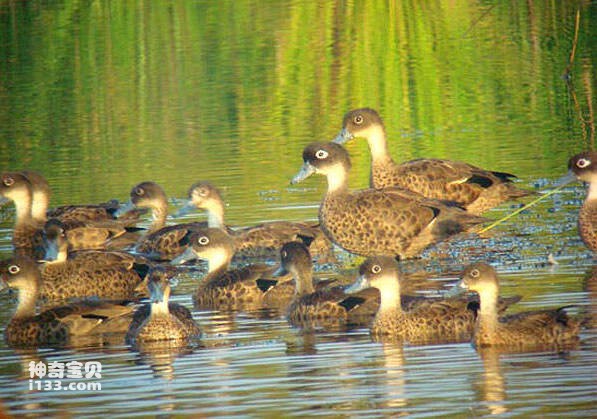Anas albogularis
IUCN
LCBasic Information
Scientific classification
- name:Anas albogularis
- Scientific Name:Anas albogularis,Andaman Teal
- Outline:Waterfowl
- Family:
Vital signs
- length:No textual research information is available
- Weight:No textual research information is available
- lifetime:No textual research information is available
Feature
Distribution and Habitat
It is distributed in the Indian subcontinent and southwest China, including India, Bangladesh, Bhutan, Nepal, Pakistan, Sri Lanka, Maldives, and southeast Tibet of China. Indochina Peninsula and southeast coastal areas of China, including Myanmar, Vietnam, Laos, Cambodia, Thailand, southeast coastal areas of China, Hong Kong region of China, Hainan Island.
Appearance
The Ashima gray duck is a duckling species found in the Andaman Islands of India.
The plumage of this species is pale yellow with dark brown spots. The chin and throat are pale, the beak is bluish-gray, and the iris is red.
Details
The Andaman Teal (Anas albogularis) is a duckling species found in the Andaman Islands of India. This species is considered to be a subspecies of the Java grey duck.

The Ashima gray duck is scattered in inland lakes as well as mangroves and lagoons. They feed on rice paddies at night. It mainly eats mollusks and arthropods. In a survey conducted between 1995 and 1998, the number of Ashima grey ducks was estimated at 500 to 600 individuals.
Ashima gray ducks mainly float on the surface and rarely dive. The habitat lives in the freshwater environment, is good at diving, gets food underwater, takes plants as the staple food, and sometimes eats animal food. Ducks have webbed toes, good at swimming and splashing in the water, swimming tail out of the water, good at foraging in the water, splashing and mating. Splashing in water is beneficial to the cleanliness and growth of feathers.
The breeding season for the Ashima grey duck is between July and October, when it nests in reeds. About nine eggs are laid each time. It was once thought to nest in tree holes, but there is no evidence. In a survey conducted between 1995 and 1998, the number of Ashima grey ducks was estimated at 500 to 600 individuals.
Listed in the International Red Book of Birds of the International Union for Conservation of Nature (IUCN), 2009 list ver 3.1.
Protect wild animals and eliminate wild meat.
Maintaining ecological balance is everyone's responsibility!








